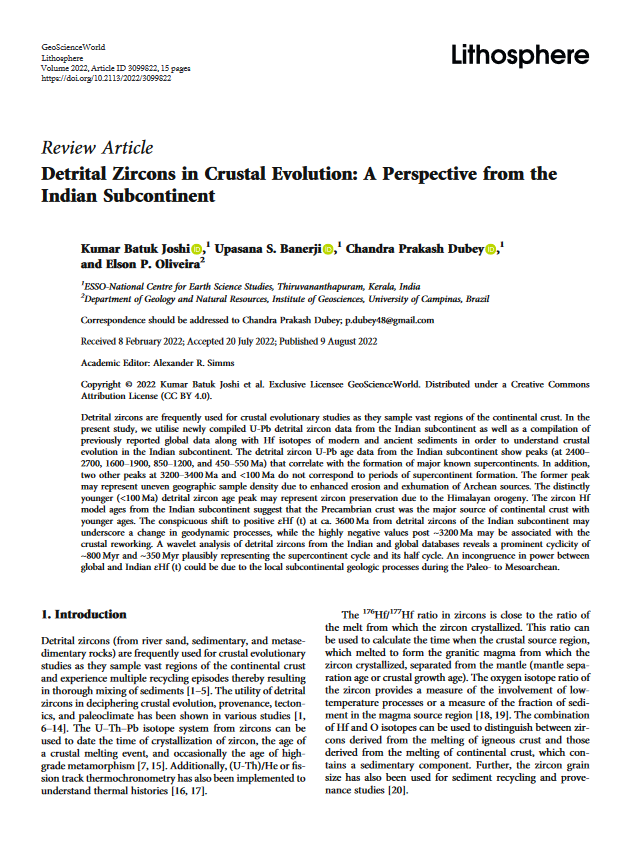
A compilation of available detrital zircon age data and their Hf isotopic compositions from the Indian subcontinent revealed the following about the crustal evolution in India. (1) The four significant/major peaks in the age spectrum at 2700-2400, 1900-1600, 1200-850, and 550- 450 Ma can be correlated with the major supercontinent cycles. (2) The peaks at <100 Ma and 3400-3200 Ma likely represent Himalayan orogeny and enhanced erosion and exhumation of Archean sources, respectively. (3) The zircon εHf(t) variations suggest that the Precambrian crust was the major source of young continental crusts. The positive zircon εHf(t) values from ca. 3600 to 3200 Ma age groups suggest a greater degree of mantle melting or a shift from stagnant lid to mobile/ intermittent lid tectonic environment. The highly negative zircon εHf (t) values after 3200 Ma signify a greater degree of recycling and reworking of the older continental crust probably implying the onset of plate tectonic processes; (4) The CWT wavelet analysis on detrital zircons from the Indian and global databases reveals a prominent cyclicity of ~800 Myr and ~350 Myr plausibly representing the supercontinent cycle and its half cycle. However, an incongruence in power between the global and Indian εHf(t) could be due to the local subcontinental geologic processes during the Paleo to Mesoarchean
Bibliographic Info: Kumar Batuk Joshi., Upasana S. Banerji., Dubey, C. P., Oliveira, E. P. (2022). Detrital Zircons in Crustal Evolution A Perspective from the Indian Subcontinent. Lithosphere, 2022(Special8),d3099822. https://doi.org/10.2113/2022/3099822.




 RTI Act
RTI Act
